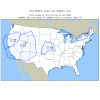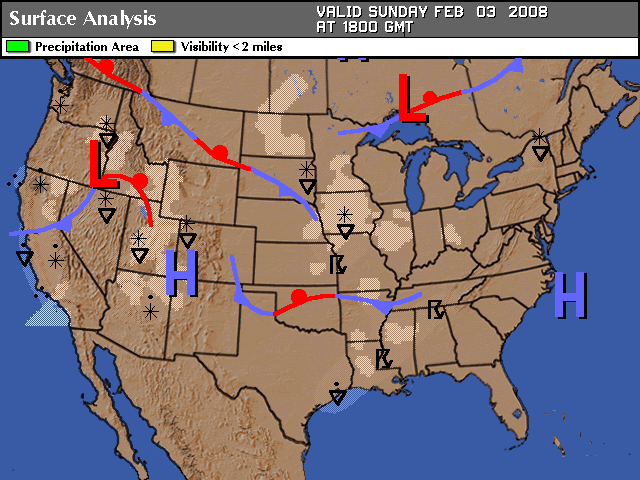tonycondon
Gastons CRO (Chief Dinner Reservation Officer)
Its been a fun winter of IFR weather that is very tempting. A nice example was yesterday and today. Yesterday was 1000ish OVC with tops reported around 3000. Temps were below freezing but the AIRMET for ice was well off to our northeast. The Icing Probability forecast on ADDS was indicating somewhat of a chance at 3000 of ice, but less than 50%. After a Cirrus and Bonanza landed with no ice, and a King Air and 182RG departed with no ice, I launched with my PP student and we got on top for a great lesson on instrument work. If it hadn't have been for those pilot reports I probably would've chickened out and done some ground work. Of course playing the conservative card is always a decent option but I dont want to always default to a no-go if the situation is flyable. So I'm wondering what you all use to make the determination? I wonder if I depend too much on the CIP/FIP tool and I'm pretty sure that I probably dont really understand its limitations.
Today is a great example. Chris, Rachel, Leah, and I were hoping to make it to Janesville for breakfast. Here is where the AIRMETs were as in picture 1
Looking good so far, right? Ceilings en route are IFR at departure to MVFR at destination. There is two pilot reports at Moline for negative icing. This was in an area that, at the time, had an icing potential forecast in the 75%-100% range. No other PIREPS for Iowa or Wisconsin. The FIP for 3000 at departure time is in picture 2.
Departure is looking around a 15% chance of some ice, but Janesville is up in the 75%-100% range. Of course no way to know really if that probability is for a trace of ice or severe.
edit: It changed while I was typing! Departure and Destination are in the 75-100% range. Of course 3000 is right at the top of the clouds - the worst place for ice anyway.
Return trip FIP is picture 3.
Probability at 3000 is below 25% for the entire route. From my looking at this picture it seems like it could be pretty reasonable to climb up to on top and cruise to Janesville. However I would be somewhat concerned about picking something up on the approach in there. After a nice breakfast with PoA friends and some time spent cleaning the leading edges the forecasts indicate to me that another blast up to on top and trip home could be made pretty much ice free. But it turns out that Ames this morning is reporting:
KAMW 031314Z AUTO 14008KT 1/4SM FZFG VV001 M04/M05 A3010 RMK AO2
and the next door ILS's are at:
KDSM 031338Z 14007KT 1/4SM R31/1600V2200FT FZFG OVC001 M04/M04 A3012 RMK AO2 SFC VIS 1/2
KIKV 031335Z AUTO 14006KT 1 3/4SM OVC002 M04/M05 A3011 RMK AO2
so the go/no-go on this trip was Ice Independent.
So what do you all look for when doing your winter IFR planning? Visible Moisture + below freezing temps = no go is not a valid answer for this excercise because obviously there is more to it. I dont intend to be launching every day of the winter and picking up loads of ice. In fact, I dont want to pick up any ice! But I know there are days where the clouds are ice-free even though the temps are below freezing, and I want to learn how to identify those days.
But I know there are days where the clouds are ice-free even though the temps are below freezing, and I want to learn how to identify those days.
Today is a great example. Chris, Rachel, Leah, and I were hoping to make it to Janesville for breakfast. Here is where the AIRMETs were as in picture 1
Looking good so far, right? Ceilings en route are IFR at departure to MVFR at destination. There is two pilot reports at Moline for negative icing. This was in an area that, at the time, had an icing potential forecast in the 75%-100% range. No other PIREPS for Iowa or Wisconsin. The FIP for 3000 at departure time is in picture 2.
Departure is looking around a 15% chance of some ice, but Janesville is up in the 75%-100% range. Of course no way to know really if that probability is for a trace of ice or severe.
edit: It changed while I was typing! Departure and Destination are in the 75-100% range. Of course 3000 is right at the top of the clouds - the worst place for ice anyway.
Return trip FIP is picture 3.
Probability at 3000 is below 25% for the entire route. From my looking at this picture it seems like it could be pretty reasonable to climb up to on top and cruise to Janesville. However I would be somewhat concerned about picking something up on the approach in there. After a nice breakfast with PoA friends and some time spent cleaning the leading edges the forecasts indicate to me that another blast up to on top and trip home could be made pretty much ice free. But it turns out that Ames this morning is reporting:
KAMW 031314Z AUTO 14008KT 1/4SM FZFG VV001 M04/M05 A3010 RMK AO2
and the next door ILS's are at:
KDSM 031338Z 14007KT 1/4SM R31/1600V2200FT FZFG OVC001 M04/M04 A3012 RMK AO2 SFC VIS 1/2
KIKV 031335Z AUTO 14006KT 1 3/4SM OVC002 M04/M05 A3011 RMK AO2
so the go/no-go on this trip was Ice Independent.
So what do you all look for when doing your winter IFR planning? Visible Moisture + below freezing temps = no go is not a valid answer for this excercise because obviously there is more to it. I dont intend to be launching every day of the winter and picking up loads of ice. In fact, I dont want to pick up any ice!
 But I know there are days where the clouds are ice-free even though the temps are below freezing, and I want to learn how to identify those days.
But I know there are days where the clouds are ice-free even though the temps are below freezing, and I want to learn how to identify those days.Attachments
Last edited:




